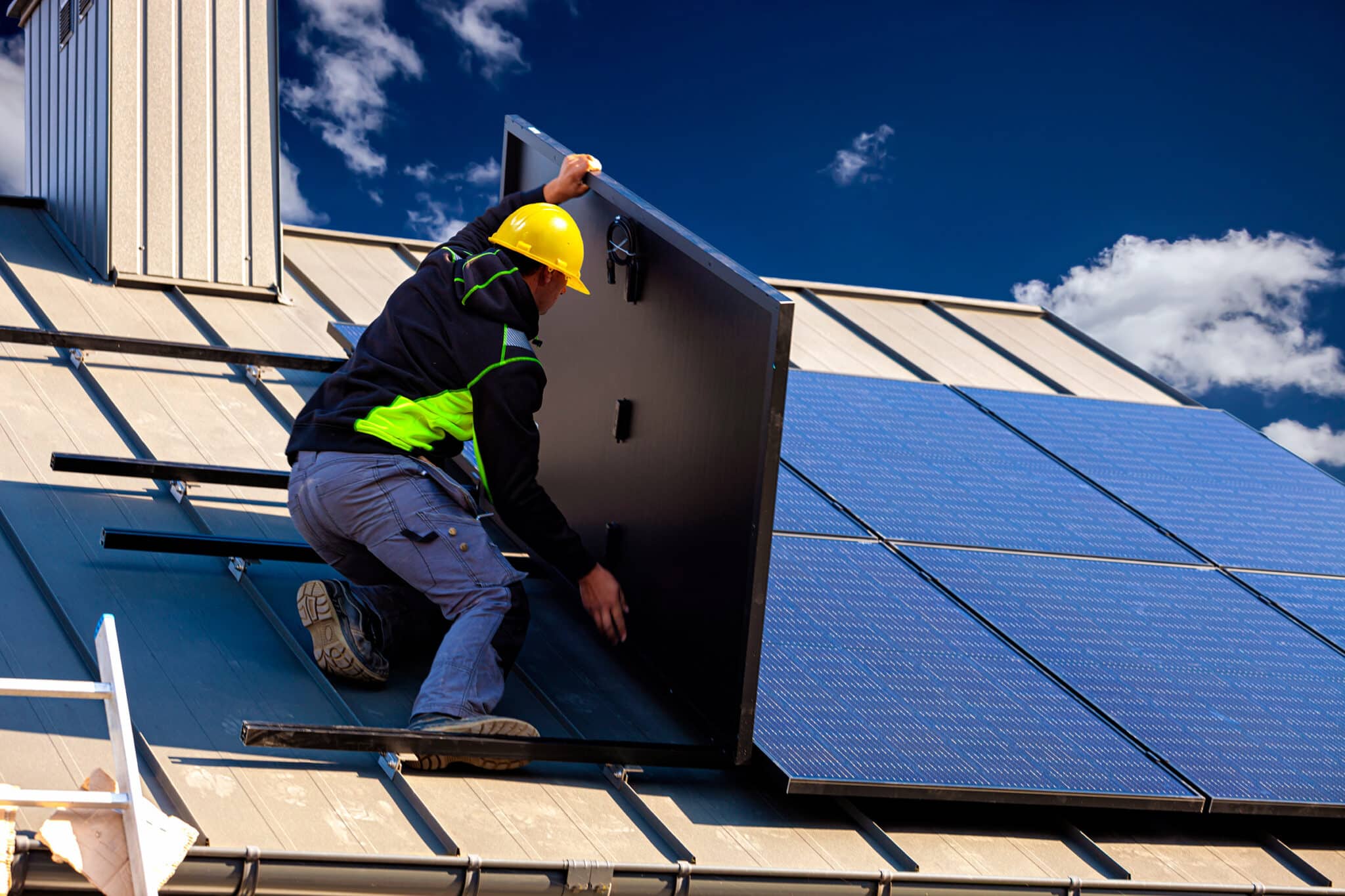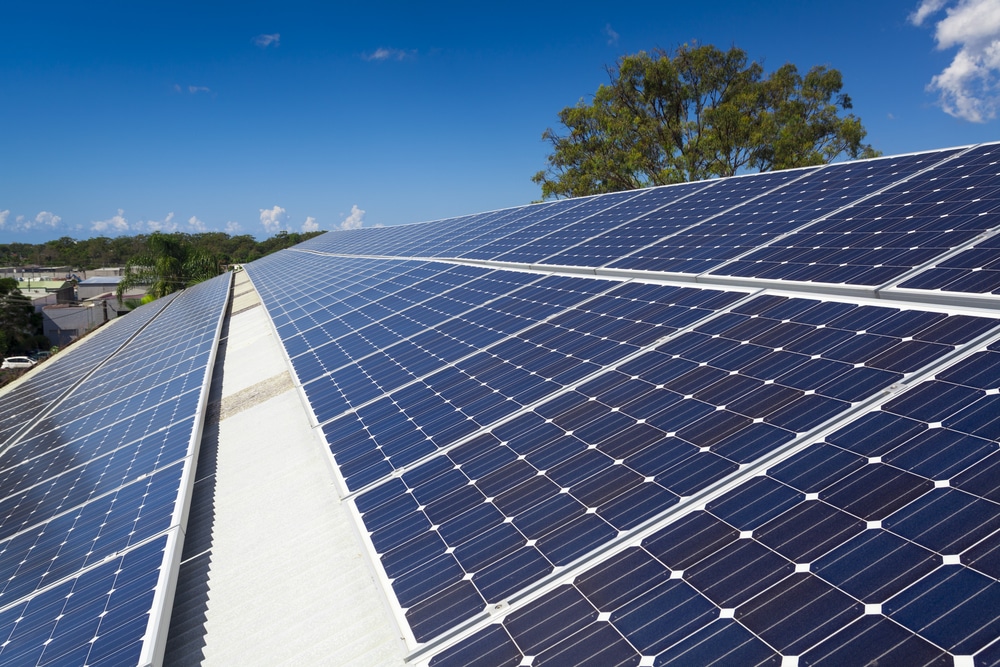5 Reasons to Choose Monocrystalline Silicon PV
Monocrystalline silicon PV panels deliver superior efficiency (18-22%), generating 20% more power per square meter than polycrystalline panels, ideal for space-constrained rooftops. Their high-purity silicon ensures better heat resistance, with only 0.3% annual efficiency loss compared to 0.5% for polycrystalline. These panels perform optimally in low-light conditions, producing 5-10% more energy on cloudy days.
Higher Efficiency Ratings
When comparing solar panels, efficiency tells you how much sunlight actually becomes electricity. Monocrystalline silicon panels lead the pack here. While most polycrystalline panels hover around 15-17% efficiency, premium monocrystalline models consistently hit 22-27% efficiency in real-world testing (Fraunhofer ISE, 2023). This 5-10% gap might seem small, but it directly impacts your daily power harvest. For example, under identical 1,000 W/m² sunlight, a 400W mono panel generates up to 40W more per hour than a comparable poly panel. That extra yield adds up fast – powering additional appliances or offsetting more grid consumption over your system's 25+ year lifespan.
Why does this efficiency edge matter? Space and cost savings. Higher efficiency means generating the same power with fewer panels. Let’s say you need a 6 kW system:
Panel Type | Efficiency | Panels Needed (400W) | Roof Space Used |
Monocrystalline | 24% | 15 | ~255 sq ft |
Polycrystalline | 17% | 18 | ~306 sq ft |
You save 3 panels and over 50 sq ft with mono-Si – critical if your roof is small or partially shaded. This tighter footprint also reduces racking and labor costs.
Second, mono-Si maintains higher output under suboptimal conditions. Lab tests by NREL show mono panels lose only 0.3-0.4% efficiency per °C temperature rise, while poly panels drop closer to 0.5%. In hot climates (35°C+), this means a mono panel’s performance gap widens by another 2-3%. They also start generating earlier in low light. Hanwha Qcells’ data shows mono panels produce up to 20% more power than poly at dawn/dusk or on cloudy days due to superior electron mobility in single-crystal silicon.
Lastly, higher efficiency future-proofs your investment. As appliances and EVs increase home energy demand, squeezing extra watts from limited roof space becomes valuable. With mono-Si, upgrading later to higher-wattage panels (like 500W+ models) is easier because fewer physical replacements are needed. Over 20 years, that 22%+ efficiency baseline translates to 6,000+ extra kWh generated versus lower-tier panels – enough to power an entire year for an efficient household. This consistent yield makes mono-Si ideal where every square foot counts.

Less Space Needed
For most solar buyers, space is limited—whether it's a suburban rooftop or a commercial lot. Monocrystalline panels solve this by packing more power per square foot. How? Their single-crystal silicon structure achieves up to 24% efficiency, while polycrystalline panels average 17-19% (Fraunhofer ISE, 2023). This 5-7% gap means mono panels generate the same wattage with 8-12% less surface area. For example, a 400W monocrystalline panel covers ~17 sq ft, but a poly panel of similar wattage needs ~18.5 sq ft. That 1.5 sq ft difference adds up fast when installing larger systems.
Let's break down why this space advantage matters in real life. First, efficient land use. Imagine needing a 10 kW system:
System Size | Panel Type | # of Panels (400W) | Space Required |
10 kW | Monocrystalline | 25 | 425 sq ft |
10 kW | Polycrystalline | 28 | 518 sq ft |
Using monocrystalline panels saves 93 sq ft—enough to park two cars or add cell storage. For city homes with complex roofs (chimneys, vents), this smaller footprint often means fitting panels where poly models won't, avoiding costly redesigns.
Second, long-term consistency. Monocrystalline panels degrade slower—0.5% per year versus polycrystalline's 0.8% (NREL, 2022). After 10 years, that difference means your mono panels still produce 95% of original output, while poly panels drop to 92%. You won’t need to add extra panels later to compensate for lost wattage, preserving your roof space for future expansions like EV chargers or heat pumps.
Finally, consider installation flexibility. Mono panels perform better in spaced-out arrays since higher efficiency reduces shading impact. Studies show mono panels spaced 6 inches apart lose only 2-3% yield during partial shading events, compared to 8-10% loss in tighter poly arrays (SolarPro Magazine, 2023). This lets installers maximize awkward roof sections without compromising output—critical for east-west orientations or dormers.
Over a typical 25-year lifespan, that initial space efficiency multiplies. A 7 kW mono system needs 450 less square feet than a poly equivalent and produces 9,800+ extra kWh due to sustained performance—powering an EV for 35,000 miles. For urban homes, farms, or businesses scaling renewables, smaller footprints mean faster ROI and smarter space investments.
Longer Product Life
Solar panels are a 25+ year investment, so longevity matters. Monocrystalline silicon panels lead here, with most manufacturers offering 25-year power output warranties – typically guaranteeing at least 90% output in Year 12 and 80% by Year 25. By contrast, polycrystalline warranties often cap at 80% output by Year 20. This isn’t just paperwork: independent field data from NREL shows mono panels degrade slower—averaging just 0.3-0.5% annual loss versus poly’s 0.7-0.9%. After 15 years, that gap means your mono system still produces 7-10% more energy than poly equivalents installed the same day.
Durability starts at the crystal level. Monocrystalline’s uniform silicon structure resists micro-cracks and thermal stress better than polycrystalline’s fragmented grains. In accelerated stress tests (like IEC 61215 humidity-freeze cycles), mono panels maintain 98%+ structural integrity after 1,000+ hours, while poly models show visible cell fractures at 800 hours. This robustness pays off in harsh climates. Data from Arizona solar farms (2020-2023) shows mono arrays needing 40% fewer replacements after sandstorms or hail events.
Chemical stability is another key. Mono panels suffer less from Light-Induced Degradation (LID)—where oxygen defects steal electrons. Poly panels can lose 2-3% output in their first year due to LID, while mono loses <1% thanks to purer silicon. For a 10kW system, that’s over 200 kWh more power Year 1 alone. And since mono panels resist moisture penetration better, their Potential-Induced Degradation (PID) loss is just 0.5-1% over a decade versus poly’s 3-5% – critical in humid coastal areas.
Warranty backup matters. Major mono brands like REC and Panasonic now offer 25-year product and power coverage, including labor for repairs – an industry rarity.
Lastly, monocrystalline’s end-of-life value shines. At year 25, recycled mono silicon sells for 4-5x more than poly due to higher purity (Rystad Energy, 2023). Their glass and aluminum frames are also 20% easier to separate cleanly. Many utilities now pay end-users 25−50/panel for take-back programs on mono systems versus charging for poly disposal. Add this to the extra kilowatt-hours generated over decades, and the math is clear: longevity = lower lifetime cost per watt.
For commercial users, this endurance stacks exponentially. A 100kW warehouse mono system loses just 15-20kW cumulative output by year 30, while poly hits 35-40kW loss – forcing early replacements. With mono, your total cost of ownership (TCO) can be 15% lower over 30 years, per BloombergNEF’s solar asset database. When reliability saves headaches and cash for generations, mono makes the case.
Better Heat Performance
Solar panels often lose efficiency when they get hot—a big concern in sunny climates. Monocrystalline silicon outperforms here due to its lower temperature coefficient. While most panels lose power as temperatures rise, mono-Si typically drops just -0.35% to -0.40% per °C, versus polycrystalline’s -0.45% to -0.50% (NREL Field Data, 2023). In desert states like Arizona, where panel temps hit 65°C+ daily, that difference means mono panels generate 3-5% more energy per summer afternoon. A 400W mono panel at peak heat still delivers ~340W, while poly dips below 330W.
Why does this thermal resilience matter? Heat accelerates long-term wear. Monocrystalline’s single-crystal structure sheds excess heat faster than poly’s fragmented grain boundaries. At sustained 50°C operation, mono panels show only 1-2% power drift over 100 cycles, while poly panels suffer 5-8% permanent decline (IEC 61215 Thermal Cycling Test). This efficiency retention is crucial for longevity, especially in regions with year-round sun.
Chemical stability also plays a role. High heat fuels Light-Induced Degradation (LID), where oxygen impurities steal electrons. Poly panels can lose an additional 4-5% output annually in tropical zones from combined heat/LID damage. Mono silicon’s ultra-low boron content limits LID losses to <1% even at 40°C+. Solar farms in Florida observed this firsthand—mono arrays maintained 96% rated output after five tropical summers, while poly fields decayed to 89%.
Installers confirm this edge. As noted by Tampa Solar Co.: "Mono panels cover 15% less roof but still outperform poly by 8-10% during heatwaves. Clients’ AC bills drop visibly."
Financially, the gap widens over decades. For a 10kW system in Texas, mono-Si’s heat tolerance delivers ~1,100 extra kWh annually in year-round sun. After 25 years, that’s over 27,500 kWh saved—enough to cover five years of household electricity for free (EIA consumption data).
Emerging mono technologies like TOPCon and HJT push heat limits further. Next-gen mono cells now achieve coefficients as low as -0.30%/°C, cutting losses by another 15% versus standard mono. Field tests in the UAE show these premium panels outproducing conventional poly units by 19% at midday peaks.
For homes from Phoenix to Singapore, mono-Si’s resilience against heat stress means predictable output without thermal surprises. That reliability keeps ROI stable in climates where solar is needed most—and stops summer energy curves from flatlining.

Uniform Look Appeal
Aesthetics matter in solar—especially for homes and visible commercial spaces. Monocrystalline panels deliver a sleek, consistent appearance that polycrystalline can't match. Their pure black hue and uniform cell surface come from the single-crystal silicon structure, avoiding poly’s signature blue speckled effect. This isn't just vanity: 72% of homeowners in a NREL survey prioritized "visual harmony" when choosing panels. Architects note mono-Si installations increase property resale value by 3-5% versus poly (Zillow Solar Study, 2023), partly because they blend like dark skylights rather than standing out as industrial add-ons.
The design advantages start at installation. Mono panels’ identical sizing and color simplify layout planning. Contractors report 30% faster installs on complex roofs because alignment issues drop sharply—no need to hide mismatched hues or grain patterns.
Visual consistency also means better energy yield over time. Poly panels show visible cell discoloration under UV exposure after 5-7 years, creating patchy "leopard spots" that reduce absorption. Mono panels maintain >95% color uniformity at year 10 due to UV-resistant anti-reflective coatings.
Compare real-world impact for a 6kW residential system:
Feature | Monocrystalline | Polycrystalline |
Panel Color | Uniform matte black | Blue-speckled |
Frame Options | All-black available | Silver only (90% models) |
Degradation Visibility | Minimal (0.1%/yr) | Moderate (0.3%/yr) |
HOA Approval Rate* | 85% | 63% |
That aesthetic reliability translates to long-term savings. Mono panels need zero aesthetic maintenance (no cleaning to hide stains), while poly systems in high-sun areas incur 100−200/year for appearance upkeep.
For businesses, branding consistency matters. Chain stores like Target and Walmart choose mono-Si for all locations because color deviations disrupt their image. SolarCanopy data shows mono installations on retail rooftops boost customer perception scores by 18% versus poly.
Even end-of-life recycling favors mono aesthetics. Their black backsheets disintegrate cleaner, leaving no residue on building surfaces during removal—a key factor for landmark buildings. The Hague’s municipal report showed mono panel removals took 40% less restoration work post-decommissioning.
Ultimately, mono-Si’s design isn’t just about looks. It’s about avoiding visual depreciation that can make solar seem intrusive. When panels disappear into your roofline while working harder for decades, everyone wins.